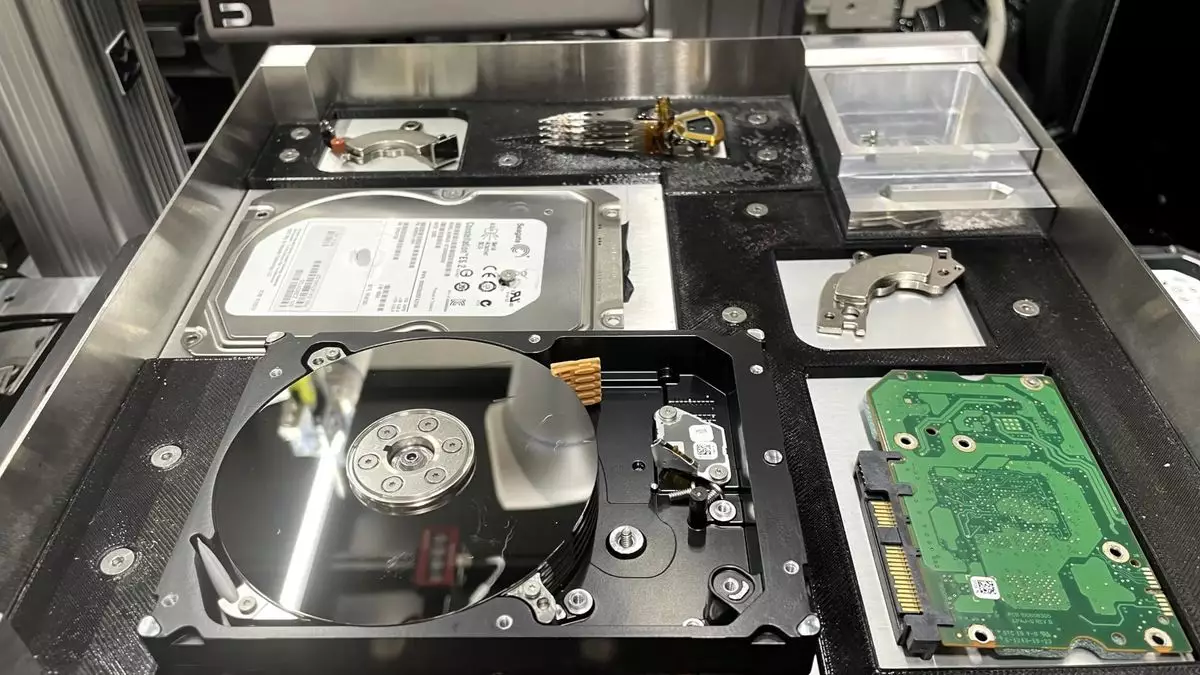In an age marked by rapid technological advancements, the issue of electronic waste (e-waste) has reached alarming proportions. The staggering statistic revealing that data centers generate about 50 million metric tons of e-waste annually highlights a significant environmental concern, as discarded hard drives play a noteworthy role in this figure. The traditional method to secure sensitive data—shredding—leads to an increasing crisis of waste, as it results in using and discarding millions of hard drives every year, with limited materials being effectively recycled. In response to this predicament, companies like Microsoft are now leveraging innovative technology to seek a sustainable solution.
Data centers rely heavily on a stream of hard drives that must be replaced frequently to maintain operational efficiency. Microsoft estimates that between 20 to 70 million hard drives are rendered obsolete each year, mainly due to the relentless demand for data and AI infrastructure. These drives, once discarded, often meet their end in a recycling process that offers little more than a mechanical obliteration, failing to salvage most of the valuable materials contained within them—an oversight both environmentally and economically unjustifiable.
Ranganathan Srikanth, a principal data scientist at Microsoft, recognized the need for a paradigm shift in this approach. He led an initiative during the 2022 Microsoft Global Hackathon aimed at creating a comprehensive system capable of achieving a remarkable 90% reuse and recycling rate for hard disks by 2025—ambitious goals in an industry notorious for its inefficiency in waste management.
To tackle the overwhelming volume of e-waste arising from obsolete hard drives, the idea emerged to utilize robots and machine learning for the disassembly process. Unlike the labor-intensive manual method of dismantling drives, robots can automate these repetitive tasks with precision and swiftness. Microsoft’s project outlines a process in which robotic systems are programmed to disassemble hard drives into their individual components, sorting and classifying these parts for efficient recycling.
One of the key components that can be recycled are the neodymium magnets, known for their strength and versatility. Through automation, the collection and recovery of such valuable materials become a viable endeavor, thus minimizing e-waste while simultaneously maximizing resource recovery. Currently, the only part discarded is the platters, which remain a necessary compromise to protect sensitive data.
While the term “artificial intelligence” often adorns headlines in a variety of sectors, it’s worth examining its genuine applicability to sustainable practices. In the context of the hard drive recycling project, AI plays a crucial role in enabling robots to accurately identify and categorize various components.
The process of disassembly is not merely about the mechanics of taking apart a hard drive; it also encompasses the recognition and sorting of distinct elements, from screws to housing materials. For robots to perform these tasks efficiently requires extensive training and sophisticated algorithms—factors that are still in early stages of development. Nevertheless, the prospects of applying AI in such a resource-conserving manner paint a hopeful picture for the future of electronics recycling.
If successful, the methods developed for hard drives could be adapted for larger electronic devices, such as laptops and desktop computers. These machines, far more complex than hard drives, contain a treasure trove of materials that could be salvaged if a practical disassembly protocol were established. While it may currently seem daunting to automate the recycling process of entire systems, the escalating urgency to manage e-waste on a global scale will undoubtedly drive further research into these technologies.
As reliance on digital resources grows, so too does the necessity to develop innovative strategies for managing e-waste. Microsoft’s endeavor illustrates the potential that robotics and AI hold not just for improving recycling efficiency, but for fostering a more sustainable future. The race against e-waste must continue, with the hope that these advancements can inspire other industries to reevaluate and revolutionize their own recycling practices. The environment demands it.

